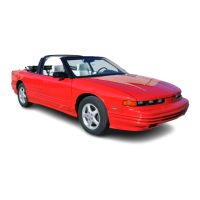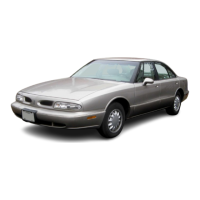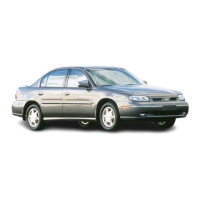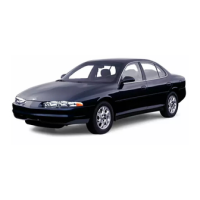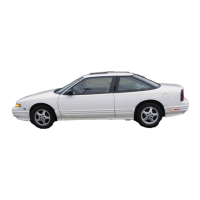Fuel
3800
Series
II
Engine (Code
K)
The 8th digit of your vehicle identification number
(VIN) shows the code letter for your engine. You will
find the VIN at the top left of your instrument panel.
(See “Vehicle Identification Number” in the Index
.)
Use regular unleaded gasoline rated at 87 octane or
higher. It should meet specifications ASTM D4814 in
the United States and CGSB
3.5-92
in Canada. These
fuels should have the proper additives,
so
you should not
have to add anything to the fuel.
In
the United States and Canada, it’s easy to be sure you
get the right kind of gasoline (unleaded). You’ll see
UNLEADED right on the pump. And only unleaded
nozzles will
fit
into your vehicle’s filler neck.
Be sure the posted octane is at least 87.
If
the octane is
less than 87, you may get a heavy knocking noise when
you drive.
If
it’s bad enough, it can damage your engine.
If
you’re using fuel rated at 87 octane or higher and you
still hear heavy knocking, your engine needs service.
But don’t worry if you hear a little pinging noise when
you’re accelerating
or
driving up a hill. That’s normal,
and you don’t have to buy a higher octane fuel to get
rid
of pinging. It’s the heavy, constant knock that means
you have a problem.
What about gasoline with blending materials that
contain oxygen (oxygenates), such as
MTBE
or
alcohol?
WTBE
is “methyl tertiary-butyl ether.” Fuel that
is
no
more than
15%
MTBE
is
fine for your vehicle.
Ethanol
is ethyl or grain alcohol. Properly-blended fuel
chat is no more than
10%
ethanol
is
fine for your
vehicle.
‘Methanol
is methyl or wood alcohol.
-
NOTICE:
Fuel that is more than 5% methanol is bad for
your vehicle. Don’t use it. It can corrode metal
parts in your fuel system and also damage plastic
and rubber parts. That damage wouldn’t be
covered under your warranty. And even at
5%
or
less, there must be %osolvents” and corrosion
preventers in this fuel to help avoid these
problems.
6-3
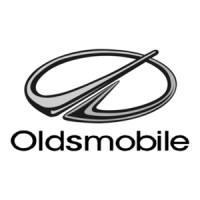
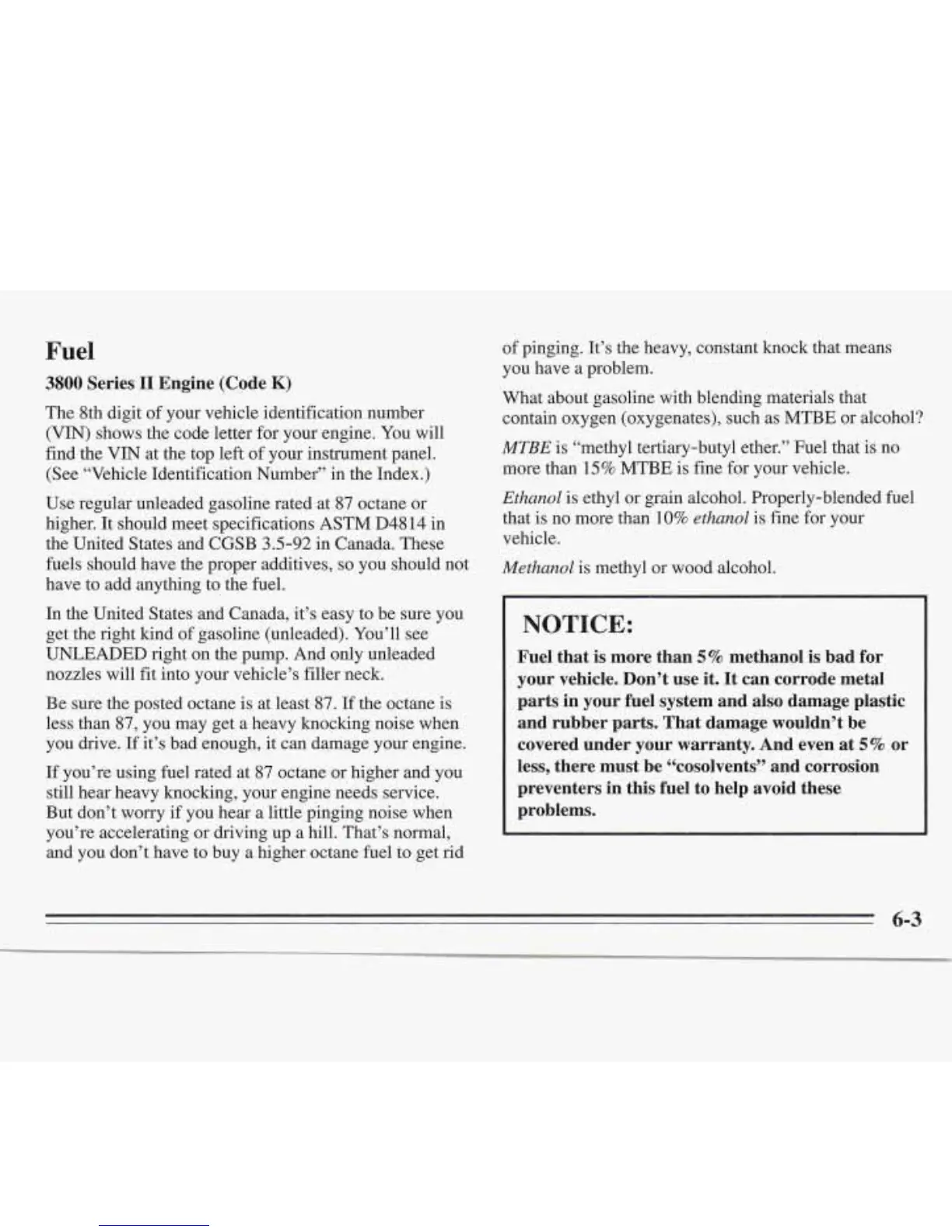